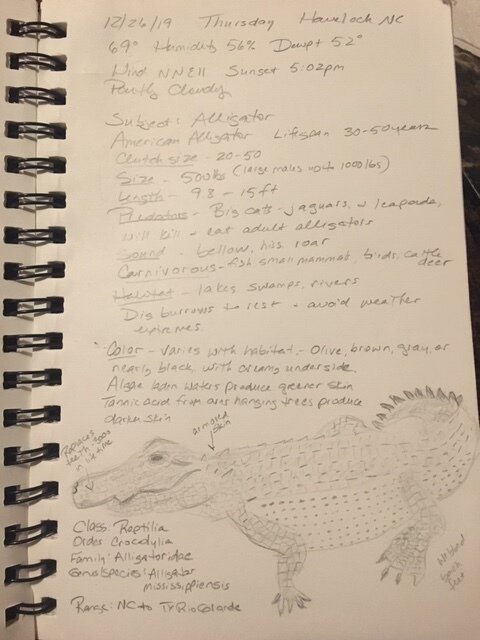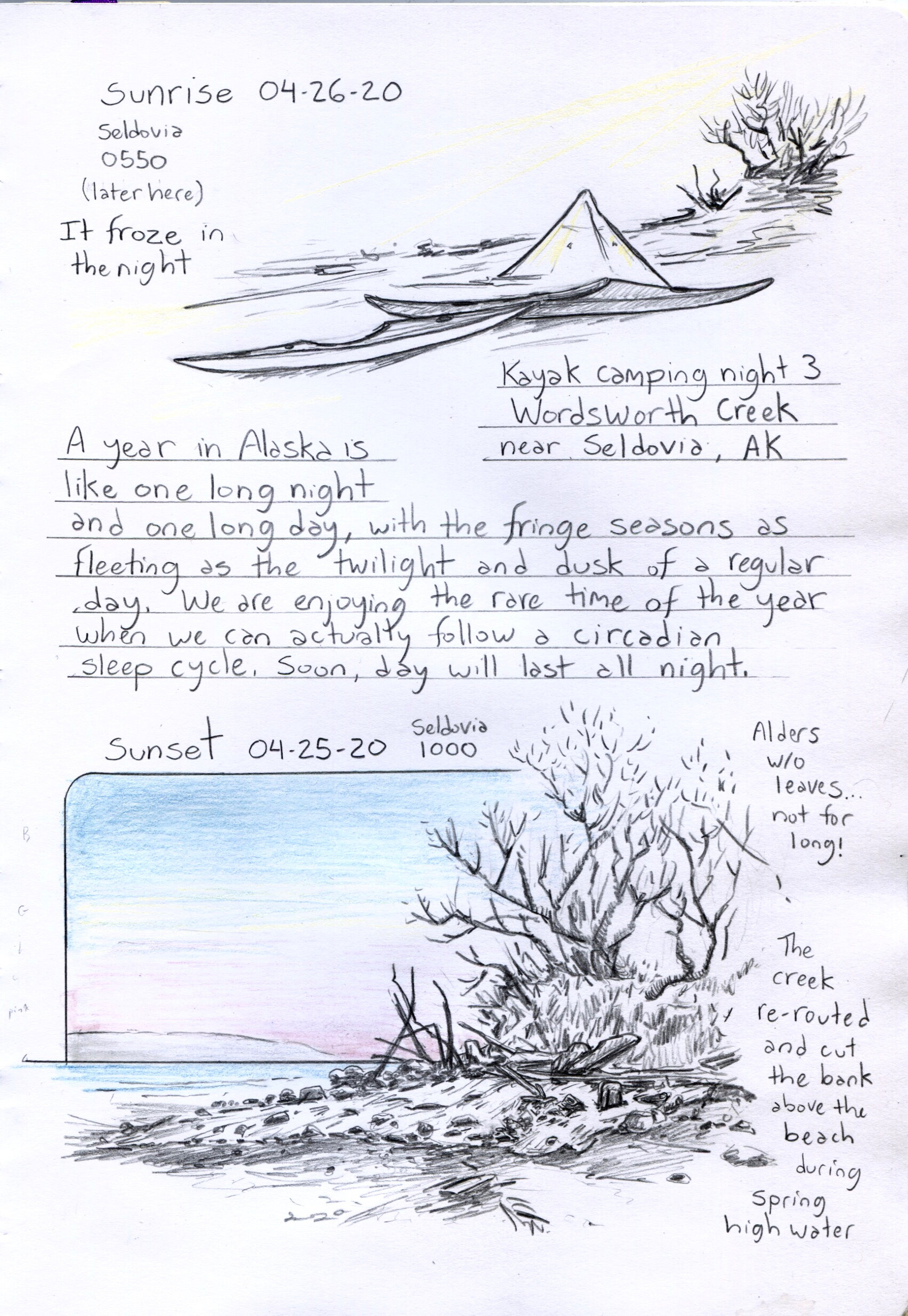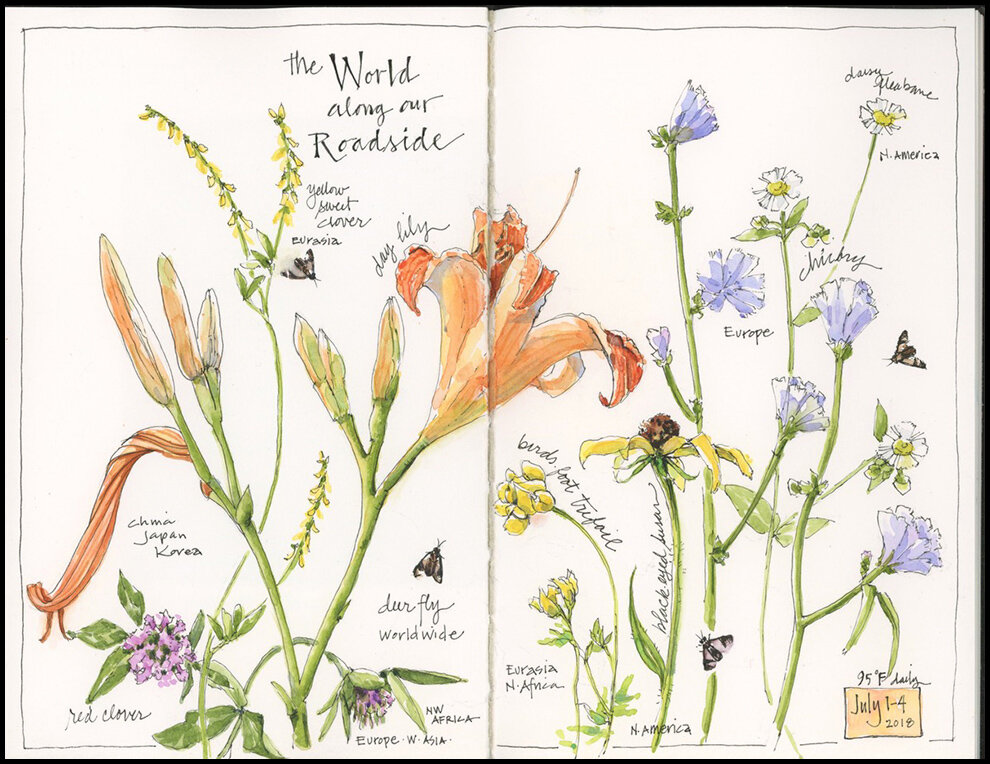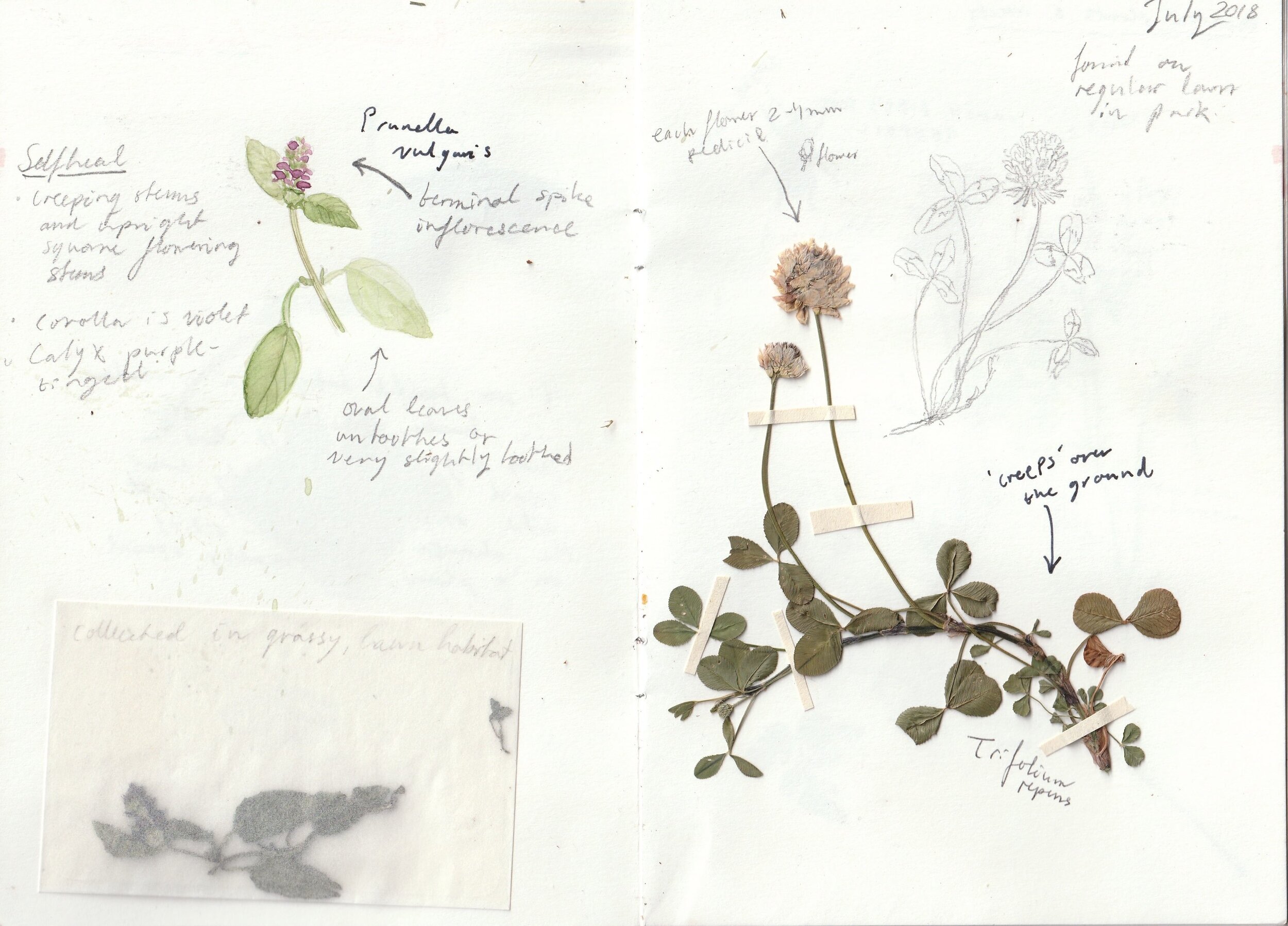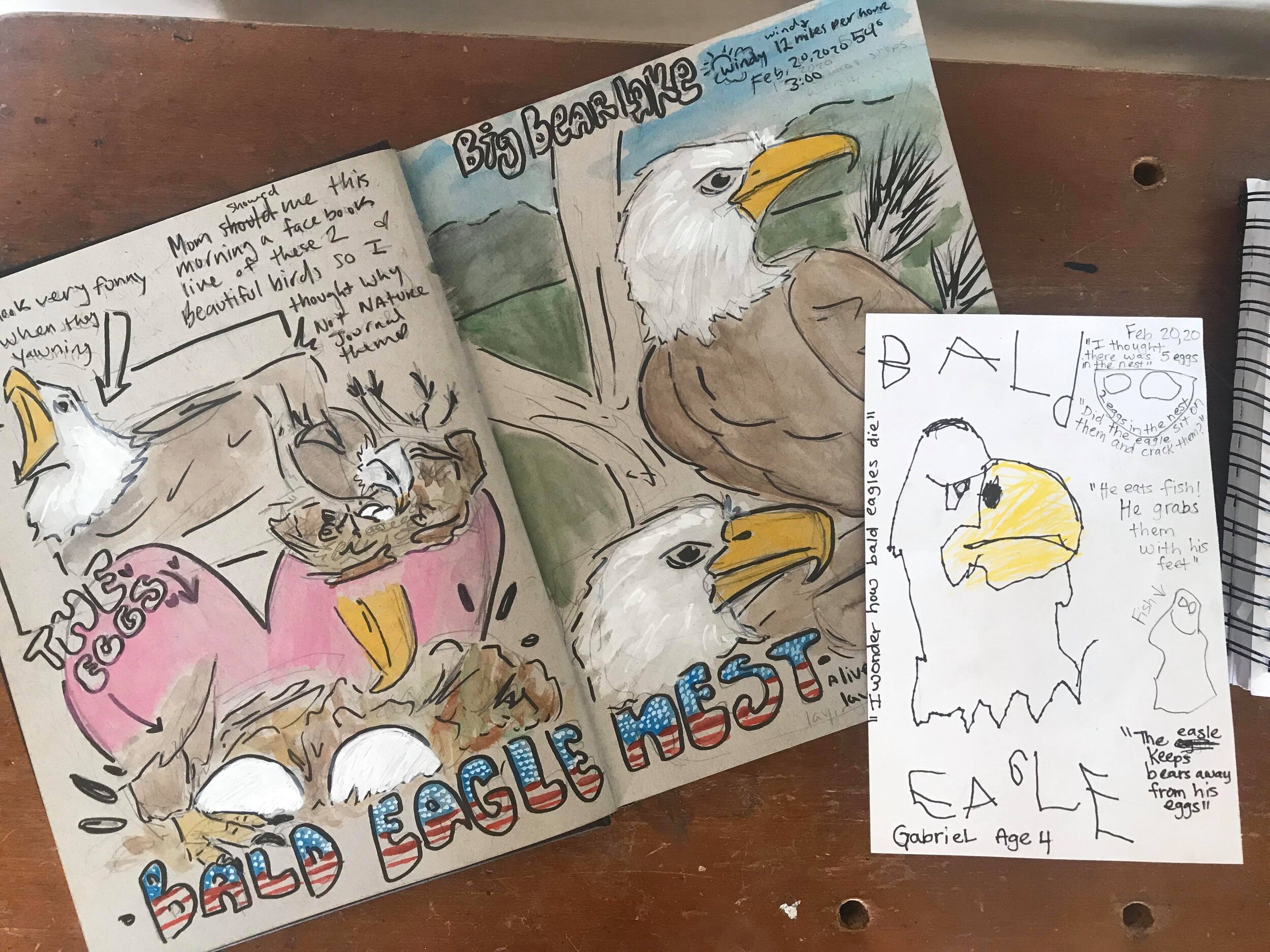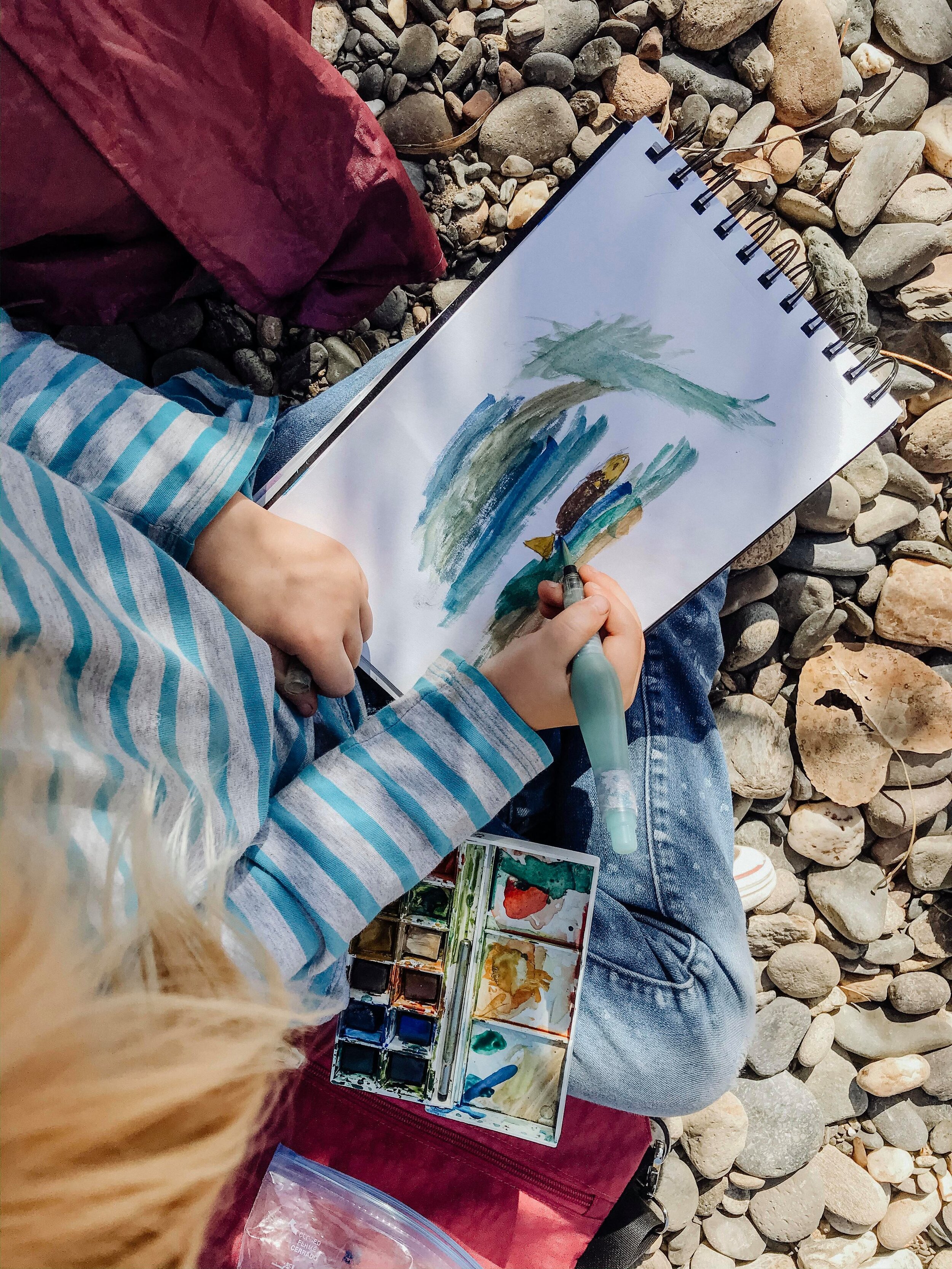Journaling
What is personal journaling and what is nature journaling? And can you do both?
In my 20's, I began keeping a personal journal using notebooks picked up from the grocery store. I was very shy and it was hard for me to talk to people, but I was very curious about the world and had many questions. My journal was a place to figure out what I was thinking.
I wrote about my hopes and dreams, my kids, the garden, the goats we kept, and day trips to the lake. It was a safe place for me to comb through the cobwebs in my head and explore what I could not verbalize.
Books on shamanism and animal symbolism brought new meaning to my nature walks and the animals that kept showing up to me in out of the ordinary experiences. I wrote through my experiences, seeing the messages nature was sending me more clearly. Journaling calmed my inner storms and grounded me, giving me the words I could not speak. I journaled to hear myself and to understand what I was thinking.
Nature Journaling
Years later, I was invited to a writing group and met a lovely older woman with the most beautiful book I’d ever seen. She placed it on the table while the other writers, uninterested, discussed characters, plot holes, and other writerly things, but all I could do was sneak glances over at her book.
When the meeting was finally over and I got to ask her about her book, and she let me look through it. The covers were bark planks, the spine was thin branches woven together and fastened to the bark with twine. I ran my fingers over the textures and carefully turned the pages to reveal, tucked inside, found treasures from her nature walks. Feathers, loose pages of handwritten notes, drawings, leaves, pressed flowers, plant fibers, and shells. I was transported back in time to her journeys.
As she got up to leave, without explanation, she told me I needed to take the Kamana course, and then she walked out the door. I never saw her again. That night I looked up Kamana and knew this was the next step in my journey.
Kamana taught me how to observe
Kamana (from the Wilderness Awareness School) starts with you picking out a sit spot every day to observe your surroundings. Then you draw in your journal what you see. Sometimes I focused on one thing of interest. Sometimes I drew a map of everything around me.
Through Kamana, I learned how to let go of my inhibitions to drawing (a little!). Knowing it was just for my eyes only, and that it was for recording details more than art, helped me to put pencil to paper.
I started with a coyote and bullfrog. The course taught me to sit with a photograph of the animal for several minutes and do nothing but observe and memorize as many details as possible. Then without looking back at the photo, draw everything I could remember. I was surprised I could remember more details than I initially thought. Then and only then, after memorizing details, did I go and look up information about the bullfrog or coyote and add it to the page.
Encouraged by this process, the next time I was out in the garden, I practiced with a sparrow that perched on a nearby post. He stayed long enough for me to observe his basic shape and coloring and when I went back inside, I sketched all the details I could remember, and then looked through the bird book to identify him. I was surprised that I knew enough details to narrow down which sparrow he might be. To this day, wherever I am, this sparrow’s details still stick out when I see one.
Symbolism and meanings
Along the way, I’ve always researched animal meanings and symbolism when I’m drawn to a particular animal. For a time, snakes would show up and I nature journaled their habitats, what they eat, and other fun facts. Since we had western diamondback rattlesnakes on our property, my kids and I did a homeschooling unit study on them, learning the lore surrounding them, their traits, places they liked to den up, and interesting facts about their venom vs other types of rattlesnakes. We even learned how to tan the hide, which I still have with my other nature treasures.
When I journaled deeper into snakes and animal symbolism, I learned how they were relating to my own life at that time. Snakes take in and slowly digest a whole animal. Likewise, at that time, I could study a topic in-depth, but then I had to back away for a time to “digest” the material and think through it.
It was claimed in the past, that shamans would ingest very small amounts of venom to build up a tolerance, thereby learning how to “transmute the poisons” and symbolically this taught me to do the same with toxic people and situations in my life.
My compass
I’m now in midlife and personal journaling is still helping me stay grounded and centered in myself and find my direction when I feel scattered or lost. I’ve found that journaling and nature journaling separately, and then together at times, reflect back to me the precise messages I need to hear.
For me, journaling will always be a place to write so that I know what I’m thinking and hearing what my intuition is telling me. And through nature journaling, I step outside of myself and observe nature and what it is telling me. And the two together keep me on my path like a compass. I go there to reflect, reconnect, and discover the wild within and without.
You can find Shanna’s recent titles Nature Day by Day, and the 5 Senses Journal as well as other journals, recipe books, and notebooks on Amazon. You can read her blog at ShannaLeaAuthor.com.


